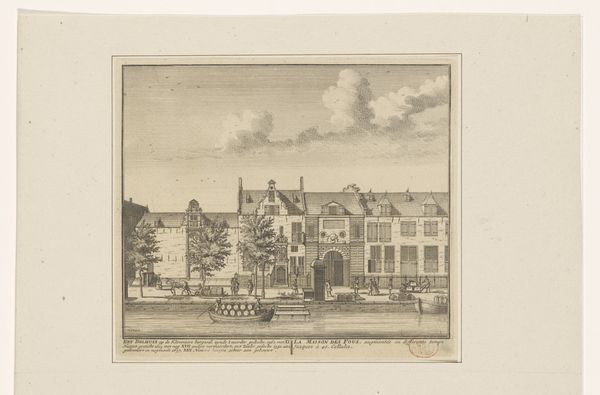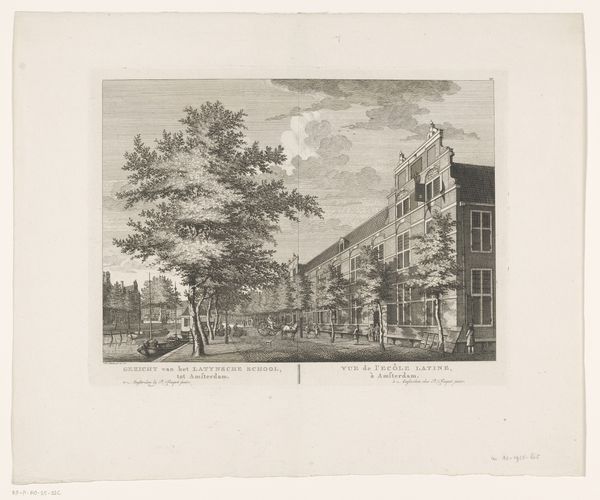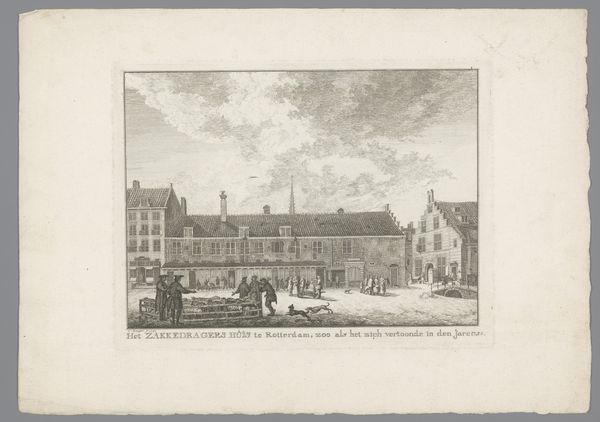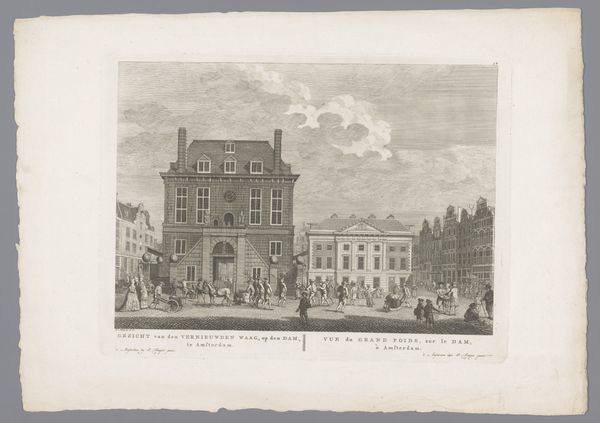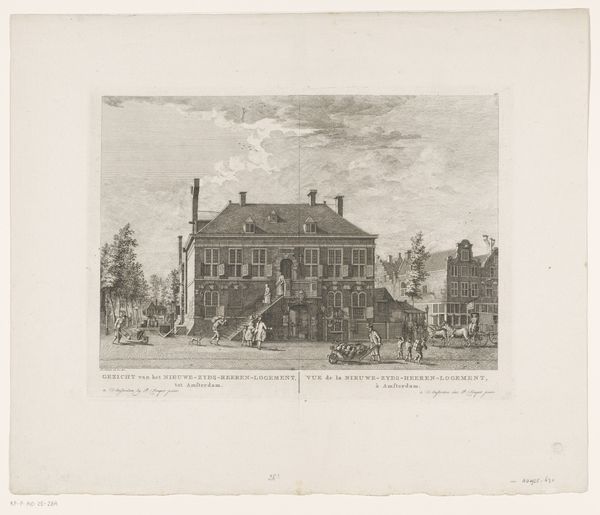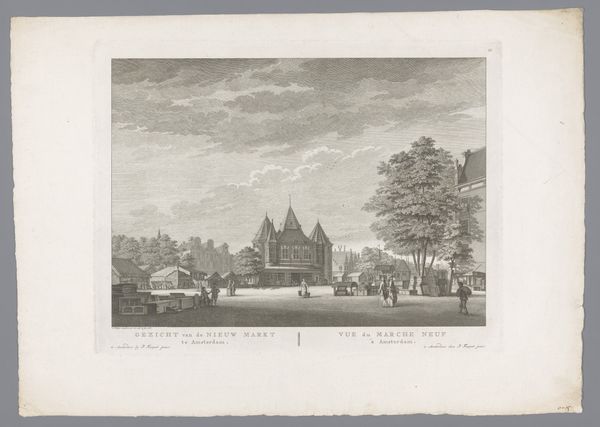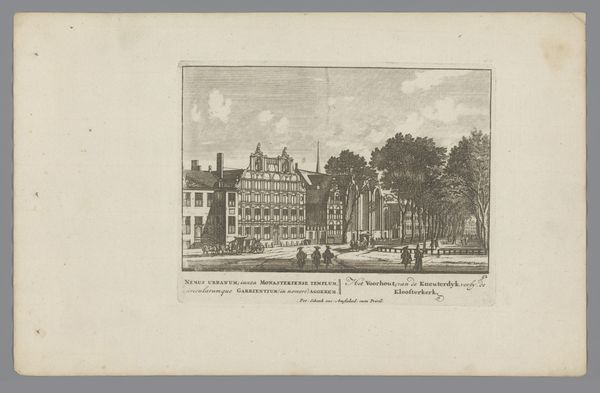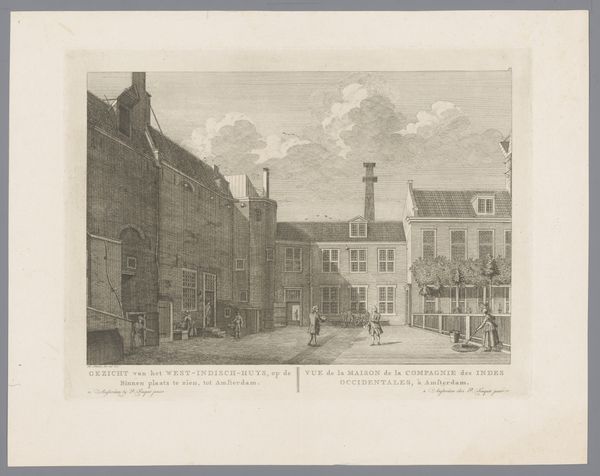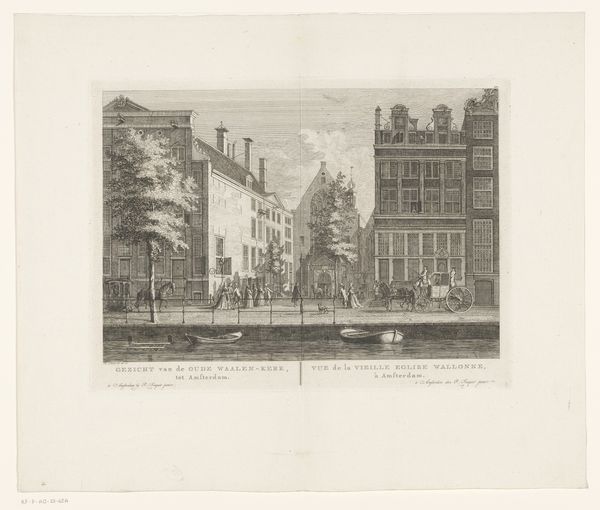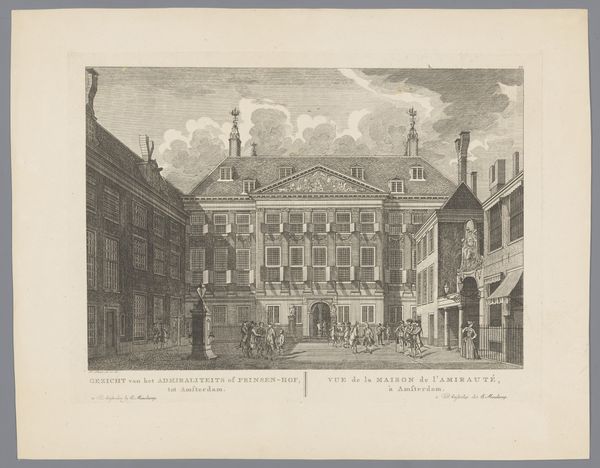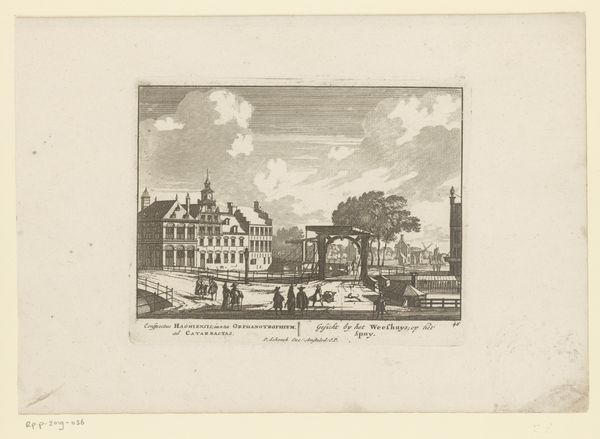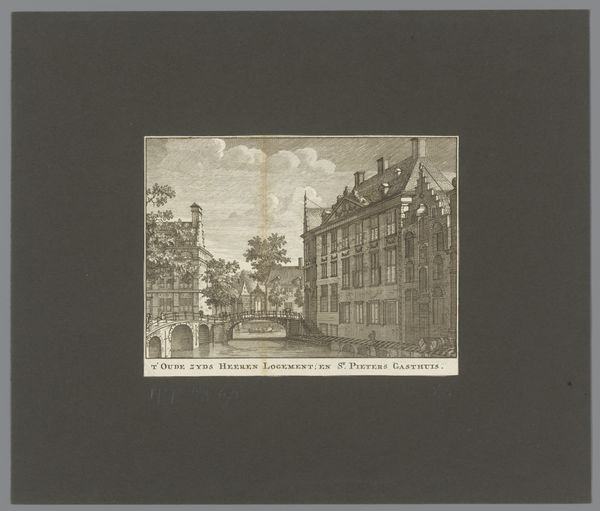
Gezicht op het Dolhuis en de poort naar het Oost-Indisch Huis aan de Kloveniersburgwal te Amsterdam c. 1770 - 1783
0:00
0:00
print, etching, engraving
#
dutch-golden-age
# print
#
etching
#
landscape
#
cityscape
#
engraving
Dimensions: height 285 mm, width 377 mm
Copyright: Rijks Museum: Open Domain
Curator: This print offers us a fascinating look at Amsterdam in the late 18th century, somewhere between 1770 and 1783, by Hermanus Petrus Schouten. Its subject is a view of the Dolhuis, what we would now call an asylum, and the gate to the East India House on the Kloveniersburgwal. Editor: It feels so...composed, so balanced. There's a clear division between the looming building on the left and the more open cityscape unfolding to the right. And everything is rendered with such incredible detail, the trees, the figures... it’s as though all the social tensions are on parade. Curator: Absolutely, that division you mention speaks volumes. The stark facade of the building hints at Dutch wealth and expansion during the Golden Age, and Schouten is careful to balance that image against the daily happenings on the street, the ordinary world next to colonial administration. Editor: The very name, "Dolhuis," it's so evocative. I'm struck by how this image juxtaposes the public face of prosperity with hints of societal issues, placing the asylum beside symbols of global commerce. Does this connection hint at anything deeper? Is there an implicit judgment of one against the other? Curator: That is exactly what Schouten is encouraging us to ask. It is important to recall that the Dutch Golden Age brought about rapid commercial expansion, yet at the cost of immense inequality. Editor: Seeing this contrast makes me question the price of progress, that constant dance between the "sane" world of commerce and the "insane" world that society often tries to hide. The image's symbolism definitely carries a powerful commentary. Curator: Indeed. The placement of these buildings within the cityscape wasn't arbitrary. The Dolhuis would have been a stark reminder of the human cost associated with rapid societal change and the complex underbelly of commercial triumph. Editor: Looking at this, it feels like stepping back in time, seeing the roots of present issues still echoing. Curator: Yes, Schouten's print is not just a pretty picture, it's a powerful commentary on the contradictions inherent in a society grappling with immense wealth and societal challenges. It makes one ponder how public buildings were consciously or unconsciously used to make societal statements.
Comments
No comments
Be the first to comment and join the conversation on the ultimate creative platform.
